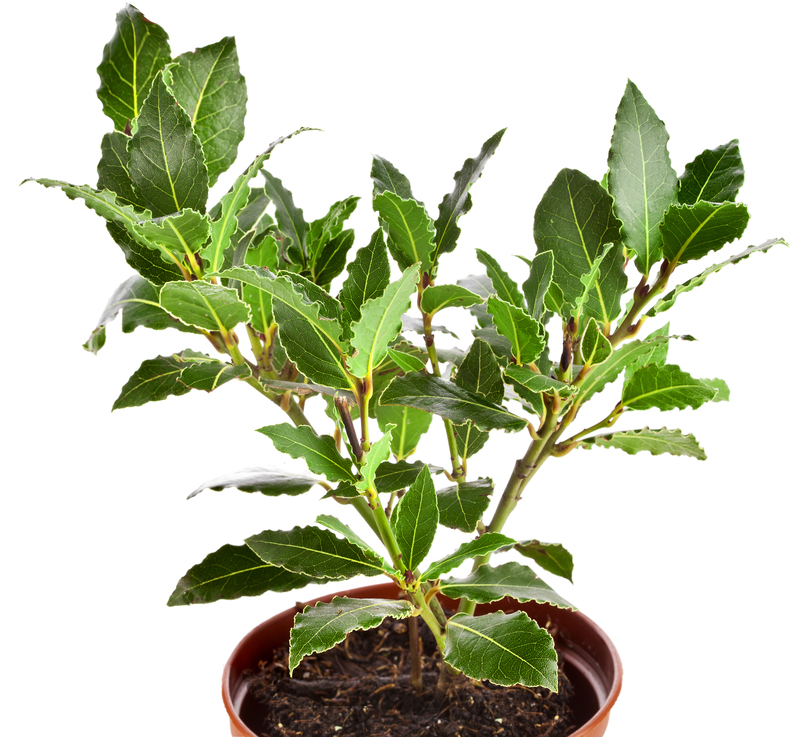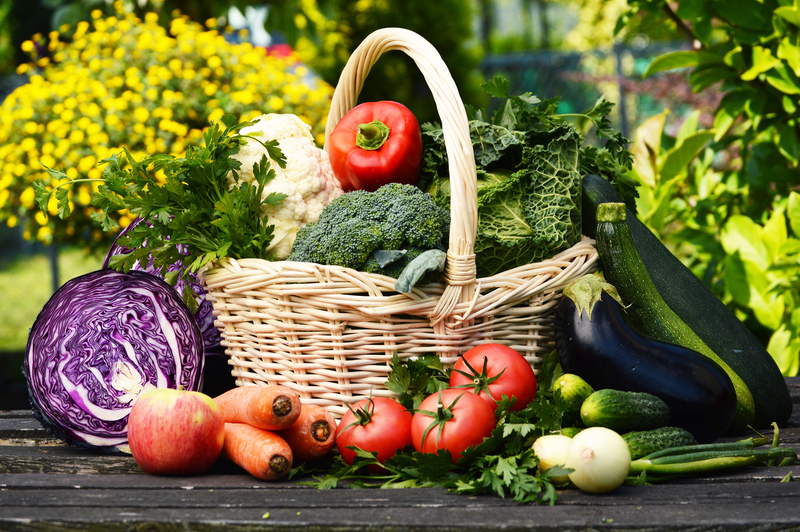Steps to Develop a Safe and Stimulating Garden for Kids
Posted on 22/06/2025
Steps to Develop a Safe and Stimulating Garden for Kids
Creating a garden that is both safe and stimulating for children combines thoughtful design, smart plant selection, and a touch of creativity. Whether you have a large backyard or a compact courtyard, a well-planned garden becomes an exciting, educational playground where kids can explore nature and develop lifelong skills. This comprehensive guide covers steps to design a child-friendly garden, highlighting key safety considerations and inspiration to make your outdoor space both fun and secure.

Why Create a Child-Friendly Garden?
A child-friendly garden offers more than just a play area; it's a place for learning, discovery, and relaxation. When children interact with plants, soil, and wildlife, they develop an appreciation for the environment, boost their physical health, and enhance their sensory and social skills. However, safety must always be prioritized to ensure an enriching experience.
Step 1: Understand Your Space and Kids' Needs
Assess the Outdoor Area
- Measure the Space - Identify garden boundaries and dimensions for planning.
- Observe Sun and Shade Patterns - Note where sunlight and shade fall throughout the day. This aids in choosing the right plants and play zones.
- Check Soil Quality - Conduct a simple soil test to see if your ground is suitable for planting.
- Inspect for Hazards - Check for broken fences, sharp tools, toxic plants, open water, or unsafe surfaces.
Understand Your Kids' Interests
- Age-Appropriate Design - Toddlers require gentle, low-height features, while older kids may crave climbing equipment or garden beds for planting.
- Incorporate Hobbies and Curiosity - If your child enjoys bugs, add a butterfly haven; if they love digging, set up a sandpit or mini vegetable patch.
Step 2: Prioritize Safety in the Garden
The most critical aspect of developing a safe garden for kids is to eliminate risks and create secure boundaries.
Key Safety Measures
- Secure Fencing and Gates - Install sturdy, lockable gates and childproof latches to prevent wandering.
- Use Non-Toxic Plants - Many common garden plants are hazardous for kids. Avoid varieties like foxglove, oleander, lily of the valley, and hydrangea.
Choose kid-safe plants: sunflowers, nasturtiums, marigolds, snapdragons, and strawberries are popular and non-toxic. - Eliminate Sharp or Hard Edges - Round off hardscaping (patios, raised beds) and use rubber mats or lawn for play zones.
- Store Tools and Chemicals - Lock away all sharp tools, fertilizers, and pesticides in a shed or box with a childproof lock.
- Control Access to Water Features - Fountains, ponds, or water barrels must be covered or fenced to prevent accidents.
Tip: Get on your hands and knees to see the space from your child's eye level. You'll spot hidden dangers more easily.
Step 3: Plan Engaging and Stimulating Garden Zones
A stimulating children's garden is about more than slides and swings. It's a sensory-rich landscape designed to spark imagination and offer hands-on learning.
Sensory Garden Elements
- Colors and Textures - Plant a rainbow of flowers, fuzzy lamb's ear, feathery grasses, fragrant herbs, and bumpy gourds.
- Sounds - Add rustling bamboo, wind chimes, or water features for gentle background noise.
- Edible Gardens - Growing fruits and vegetables like peas, cherry tomatoes, and strawberries promotes healthy eating and hands-on fun.
- Wildlife-Friendly Spaces - Birdhouses, bee hotels, and butterfly plants invite fascinating creatures for kids to observe.
Play Areas and Activity Spaces
- Mud Kitchens - Simple mud play setups with old utensils and pallets unleash creativity.
- Sandpits and Digging Zones - A dedicated spot for digging keeps kids entertained and your flower beds intact.
- Climbing Structures - Teepees of bamboo poles, stumps, or soft log piles encourage gross motor skills.
- Paths and Mazes - Windy paths made with bark, stepping stones, or low hedges encourage exploration.
- Quiet Retreats - Bean teepees, fairy houses, or a simple hammock offer peaceful places to unwind or read.
Step 4: Involve Children in Garden Planning
Getting kids involved in the design process ensures the garden is tailored to their interests and helps them feel more connected to the space.
- Let kids pick plants for their own mini-planter, patch, or pot.
- Create colorful signs or labels together for each area or bed.
- Draw a map of the planned garden layout as a fun family activity.
- Decide on garden features by voting or brainstorming as a team.
*Including children in planning fosters responsibility and gives them a sense of ownership.*
Step 5: Select Safe Materials and Surfaces
Choosing safe, durable materials is essential when developing a stimulating kids' garden.
Recommended Surfaces
- Natural Grass - Soft and gentle on bare feet.
- Rubber Mulch or Tiles - Absorbs impact under play equipment.
- Bark Chippings - Great for paths, softens falls, and drains well.
- Non-slip Paving - Ensure any stones or decking are slip-resistant, especially after rain.
Materials to Use (and Avoid)
- Use untreated wood for beds and play structures to avoid chemicals.
- Metal fixtures should have safety covers and avoid sharp corners.
- Choose non-toxic paints/stains for garden furniture and decorations.
- Avoid gravel, marbles, or small pebbles in play zones as they can be choking hazards.
Step 6: Choose the Best Plants for a Children's Garden
Not all plants are created equal when it comes to safe and sensory gardens for kids. Focus on robust, non-toxic, and interactive options.
Avoid irritant or poisonous plants--check local guides for your area.
Top Plant Picks
- Sunflowers - Tall, cheerful, and easy to grow from seed.
- Nasturtiums - Edible flowers, bright colors, and quick to germinate.
- Lavender and Mint - Wonderful scents, soft foliage, and attract pollinators.
- Pumpkins and Squash - Fun to grow and see develop from flower to fruit.
- Snapdragons - Interactive blooms kids can "snap."
- Strawberries - Sweet fruit, pretty blossoms, easy care.
- Peas or Beans - Climbing vines perfect for teepees or wigwams.
If you want a wildlife-friendly garden, include buddleja, verbena, or marigolds to attract butterflies and bees!
Step 7: Add Creative and Learning Features
Stimulating garden environments for children go beyond basic swings and sandpits. Add interactive, creative elements to foster learning and imagination:
- Mini Vegetable Plots or Raised Beds - Let kids sow, water, and harvest their own food.
- Stepping Stone Trails - Painted stones give a "fairy path" and help with balance.
- Weather Stations - Simple rain gauges or wind vanes spark science curiosity.
- Bug Hotels - Stack logs, bricks, bark, and tubes for beneficial insects to shelter.
- Art Boards or Chalk Walls - Outdoor creativity that changes with every rain.
- Story Corners - A waterproof beanbag and canopy turn any nook into a magical reading hideaway.
Step 8: Maintain and Evolve Your Child-Friendly Garden
A safe and stimulating garden for kids needs regular care and occasional upgrades to stay fresh and interesting.
- Keep play zones clean and free of debris or animal waste.
- Check equipment (swings, sandpits, fences) for signs of wear or damage.
- Refresh plants seasonally; let kids help with sowing and harvesting.
- Add or swap features as your child grows (a sandpit becomes a flower patch, for example).
- Encourage wildlife by topping up bird feeders or cleaning water bowls.
Essential Safety Reminders
- Constant supervision is key, especially for younger children.
- Store all chemicals and tools safely out of reach.
- Cover or fence off all ponds, fountains, and rain barrels.
- Teach children garden rules, such as not tasting unknown berries or plants.
- Wear hats, use sunscreen, and provide shade in hotter months.
Sample Child-Friendly Garden Layout
To visualize a safe garden design for children, imagine this balanced layout:
- Central grassy play area for running and picnics.
- Vegetable patches in one corner with raised beds for easy access.
- Sandpit and mud kitchen on a bark-chip surface with shade nearby.
- Meandering path with stepping stones, lined with sensory plants.
- Wildlife zone with bird feeders, bee hotel, and butterfly-attracting flowers.
- Comfy retreat with beanbags under a leafy arch or tent.

Involving Kids in Ongoing Care
Encourage responsibility by assigning simple gardening chores. Even toddlers can water pots, older kids can weed or sow seeds, and everyone can help harvest. These enjoyable activities build confidence, patience, and a lifelong love of nature.
Conclusion: Growing Safe, Happy Memories in Your Kids' Garden
By following these steps to create a safe and stimulating garden for children, you set the stage for unforgettable outdoor adventures. A well-planned garden offers endless hours of fun, valuable learning, and shared family time. Regular supervision and seasonal updates mean your backyard will always be a cherished place to play, explore, and grow.
For more tips and inspiration on developing safe and engaging gardens for kids, keep exploring our articles and let your imagination bloom alongside your garden!

